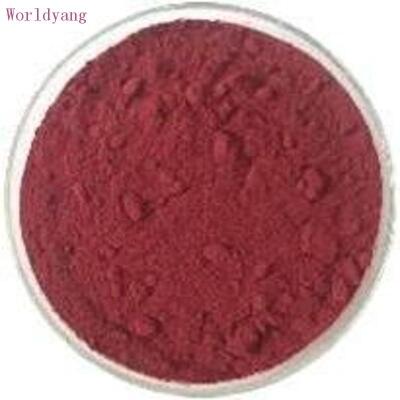Abnormal pH is the main factor affecting serum valproic acid concentration
-
Last Update: 2020-06-27
-
Source: Internet
-
Author: User
Search more information of high quality chemicals, good prices and reliable suppliers, visit
www.echemi.com
Individual specificity of patients can lead to pharmacokinetic changes in valproate (VPA)For example, the free valproic acid content can be significantly increased in patients with low albumin emis, or the concentration of serum valproic acid can be increased due to the saturation of binding proteinsDirect determination of serum free valproic acid concentration scants can accurately assess drug levels, but not all medical institutions have the condition to use this methodThe effects of low albuminemia on free valproic acid content can be quantified, And After evaluating 53 cases of albumin content of 1.8-4.1g/dL and the total serum valproic acid concentration in patients with normal albumin content, creatine and bilirubin, a formula for predicting serum propylene acid concentrations was obtained- Excerpted from the article: Drisaldi A, et alNeurocrit Care2018 Oct 16doi: 10.1007/s12028-018-0627-4Individual specificity ofpatients can lead to pharmacokinetic changes in valproate (VPA)For example, the free valproic acid content can be significantly increased in patients with low albumin emis, or the concentration of serum valproic acid can be increased due to the saturation of binding proteinsDirect determination of serum free valproic acid concentration scants can accurately assess drug levels, but not all medical institutions have the condition to use this methodThe effects of low albuminemia on free valproic acid content can be quantified, And After evaluating 53 cases of albumin content of 1.8-4.1g/dL and the total serum valproic acid concentration in patients with normal albumin content, creatine and bilirubin, a formula for predicting serum propylene acid concentrations was obtainedHermida and others found that 42 patients in the serum albumin average concentration of 3.55 to 0.5g/dL, the total concentration of valproic acid is less than 75mg/L, the predicted serum free valproic acid score and measured free valproic acid fraction (10.6 to 4.8% vs101 to 6.3%) was approximately the same, while 11 patients with a total serum valproic acid concentration greater than 75 mg/L were predicted to have a seroly free valproic acid fraction lower than the measured free valproic acid fraction (7.7 to 1.3% vs 13.8 to 3.2%, p 0.001) Therefore, for patients with a total concentration of valproic acid less than 75 mg/L, the formula CN-alphaHCH/6.5 can be evaluated, and alphaH is the difference of free valproic acid corresponding to the serum albumin concentration of patients, CH is the total concentration of serum valproic acid, and 6.5 is the corresponding free valproic acid fraction (reference range 50%) when the serum albumin concentration is 42g/L Aulbrey Drisaldi of the South Carolina Medical University in Charleston, USA, and others evaluated the accuracy of the equation, published online in October 2018 this retrospective study included 174 adult non-pregnant epilepsy patients treated at a single medical center between July 1, 2014 and June 7, 2017, and tested for serum free valproic acid and total valproic acid concentrations Measure serum albumin concentration within 7 days of taking valproic acid Exclude patients whose albumin concentrations of 1.8g/dL or valproate cannot be detected Collect patient clinical, demographic, and laboratory test data pH 7.35 or 7.45 is an exception of pH Serum albumin concentration 2.6-3.5g/dL is mild hypoalbuminemia, serum albumin concentration 1.8-2.5g/dL is moderate to severe hypoalbuminemia Patients with a history of liver disease or cirrhosis calculated child-Pugh scores to record companion drugs that may interact with valproic acid; The serum free valproic acid concentration was divided into subtherapeutic level, treatment level or super-treatment level with 7-23mg/L as the reference range The measured concentration is defined as "consistent" at the same level as the predicted concentration the median age of 174 patients was 58 years (IQR-44-67), and the median serum albumin concentration was 3g/dL (IQR-2.5-3.4) Eleven per cent of patients were outpatients, 29 per cent were ICU patients and 59.8 per cent were in general wards 21.3% of patients had metabolic abnormalities, of which 46% were acidoemia and 54% were alkaloids In hospitalized patients, the median interval of serum valproic acid was 4 days from admission to measurement (IQR-1-8) The median and predicted serum free valproate concentrations were 17.5mg/L (IQR-11-26) and 10.5mg/L (IQR-7.7-13.9), with an average of 21.8 to 14.9mg/L and 11.9 to 6.3mg/L (Spearman coefficients associated with 0.60, p0.010) The proportion of patients who measured consistent with the predicted serum free valproic acid concentration was 56.9% In 75 patients with inconsistent free valproate concentrations, 97.3% of the predicted concentrations were lower than the measured concentrations (Table 1) In patients with ICU, the consistency of serum free valproic acid concentration was 42%, in general ward patients 63%, and in outpatient patients, the consistency was 65% table 1 Classification of serum free valproate blood drug concentrations was measured and predicted in 174 patients the total concentration of serum valproic acid of 75 mg/L was 54.6%, and the median concentration of free valproic acid was 27.6% (IQR - 19.6-45%) In patients with a total concentration of valproic acid of 75 mg/L, the median concentration of free valproic acid was 21.4% (IQR - 16.7-35%) The single-variable analysis showed that the treatment of abnormal pH, hyperuric acid emisand and boost support was related to the inconsistencies of measured and predicted serum free valproic acid concentrations (Table 2) The multivariate analysis showed that the only important variable that measured inconsistencies with the predicted concentration of free valproate was the pH anomaly (OR.2.69; 95% CI, 1.27-5.68, p-0.01) Table 2 Analysis of relevant factors that measured inconsistencies with the prediction of free valproate concentrations the authors believe that the serum free valproic acid concentration and measured values predicted using the Hermida equation are inconsistent Miscalculation or underestimation of serum free valproic acid concentrations can lead to clinical drug adjustment errors, so direct determination of serum free valproic acid concentrations is ideal for safe and effective use of valproic acid.
This article is an English version of an article which is originally in the Chinese language on echemi.com and is provided for information purposes only.
This website makes no representation or warranty of any kind, either expressed or implied, as to the accuracy, completeness ownership or reliability of
the article or any translations thereof. If you have any concerns or complaints relating to the article, please send an email, providing a detailed
description of the concern or complaint, to
service@echemi.com. A staff member will contact you within 5 working days. Once verified, infringing content
will be removed immediately.







